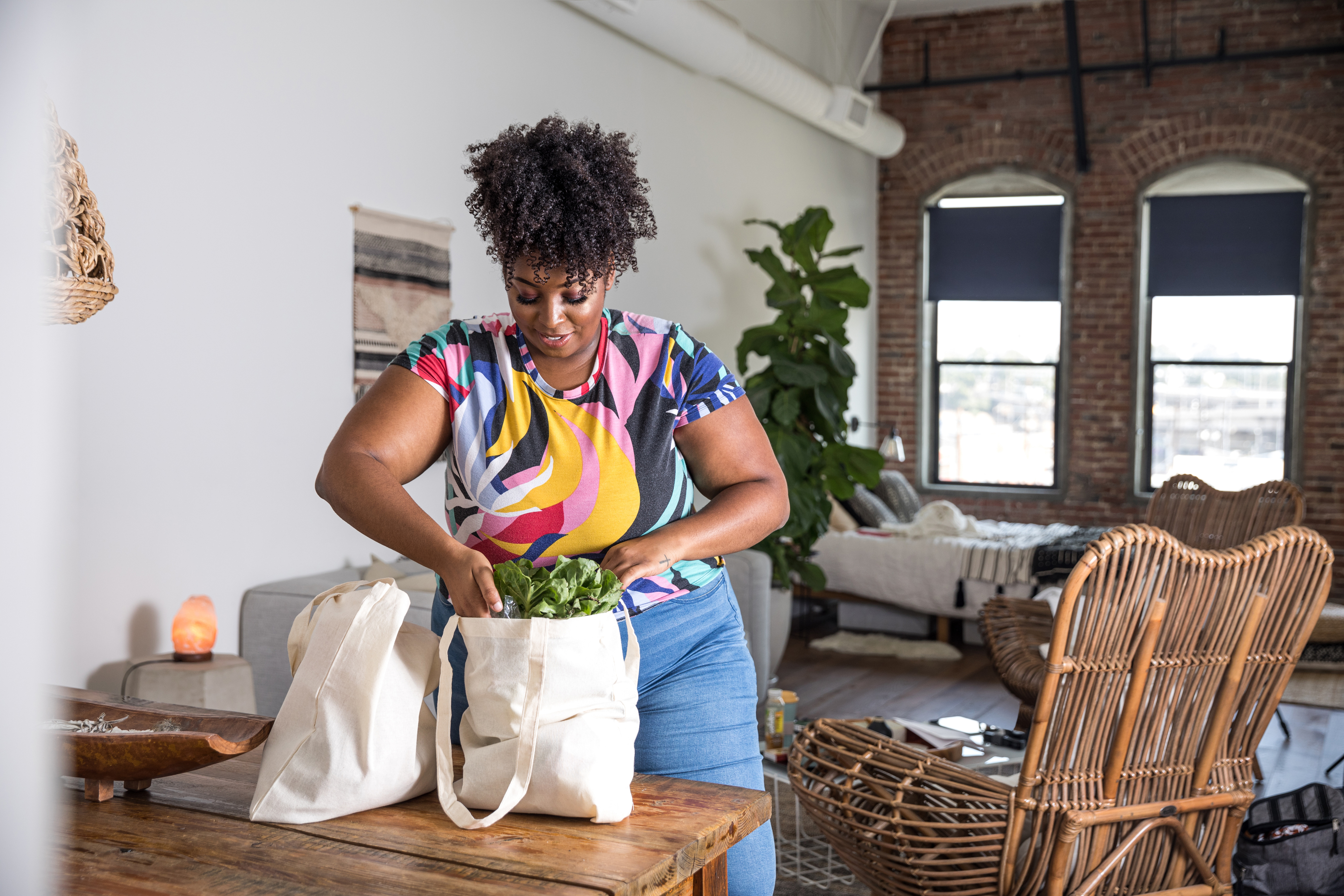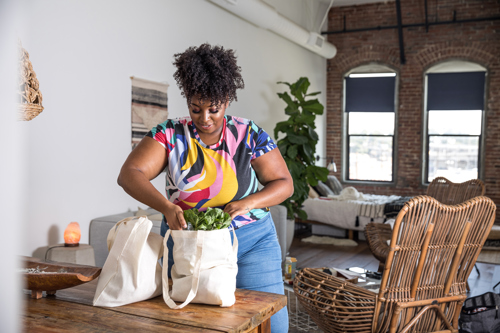Imagine living so sustainably that your entire year’s worth of trash could fit into a Mason jar. This might sound far-fetched or even downright impossible, but according to adherents of Zero Waste living, a movement that started in the 1980s and has surged in popularity over the last twenty years, you can significantly cut back on your trash output by making a few strategic changes to your lifestyle. Here, we’ll give a quick overview of the Zero Waste movement and offer some tips on how you can start living waste-free.
1. What Is Zero Waste Living?
Zero Waste is the attempt to eliminate all trash and landfill deposits. The driving force behind the movement is to preserve our planet. To put it in perspective, there are actually 87 garbage bins’ worth of material, such as timber and petroleum, that goes into producing a single bin you see on the curb.

As Kathryn Kellogg notes on her blog, the Zero Waste philosophy offers lifestyle tips that people can practice on an individual level, but the ultimate goal is to redefine the economic systems that have made our lives so dependent on single-use, disposable goods.
2. Preparing for Zero Waste Living: The 5 Rs
So how does one even start living waste-free? The first step is to start treating every material you use and buy as a valued resource, rather than something to eventually discard. Then, according to Bea Johnson, author of the well-known Zero Waste Home blog, it boils down to following the Five Rs: refuse, reduce, reuse, recycle and rot. We’ll cover each of these Rs below, but keep in mind as you’re reading that the transition period doesn’t have to happen in a single weekend. The key to sustainably and happily pivoting to a Zero Waste lifestyle is to ease into each R slowly and make adjustments in your living space one at a time.
Refuse
The first R, refuse, doesn’t even require any changes to your shopping or disposal habits. If you’re offered an item that you don’t need, refuse it. Sounds easy enough, but you’ll be surprised at how conditioned we are to automatically accept free things. If you’re at a conference for work, politely decline the branded hats, pens or shirts you know will end up in a junk drawer or the back of your closet.
Reduce
Reducing goes hand in hand with refusing. On your shopping trips, be realistic about what you “need” versus what you “want.” Pay attention to the quality of the item you’re thinking about buying. If it works with your budget, it’s often best to go with the more expensive but higher-quality item — it’ll last longer and you’ll save the money you would’ve spent replacing the disposable, cheaper alternative.
Part of reducing is also thinking about the areas in your life where you can switch to eco-friendly alternatives. For example, instead of receiving your monthly bank statement in the mail, opt for paperless delivery instead. If there’s a flyer for an event you’re interested in, take a picture of it with your phone.
Reuse
The next time you do a deep clean of your house, be mindful of any items that are just taking up space. But before you toss anything out, think about ways you might be able to reuse, repurpose or repair it, whether it’s an old shirt that you cut up into dish rags or a worn toothbrush you use to clean grout. If there’s an item in good condition that you know someone else can benefit from, donating it to a friend or selling it on Facebook Marketplace or Craigslist can be a great way to give it a new home.
Recycle
Out of all the Rs, recycling is most people’s go-to habit when they think of being environmentally friendly. But even though it’s important to recycle, it often tends to be less impactful than incorporating the other Rs into your routine. This has to do with the complex politics of recycling — for instance, which countries allow the U.S. and other nations to send them recycled goods — that often results in a good chunk of what you recycle ending up in landfills anyway. Plus, an arguably more effective long-term strategy is to avoid plastic (or any recycled) packaging altogether.
Rot
Rot, or composting, may have the steepest learning curve for some Zero Waste beginners. But the ecological benefits are compelling. Compostable scraps make up almost 30 percent of household waste. Instead of letting your compost churn out methane gas in landfills, it can actually be a great soil conditioner — even better than chemical fertilizers. If you have the space in your yard, you can build a DIY compost bin from free pallets or buy one for your food scraps and yard trimmings. Apartment dwellers also have a range of options for indoor composting that, if done correctly, won’t emit any scent.


3. Essential Supplies for a Zero Waste Lifestyle
Living waste-free will require swapping disposable items in your house with permanent or reusable alternatives. Here are some of the common supplies you might need as you get started on your zero waste lifestyle:
- Ditch plastic sandwich baggies for silicone Stasher bags. They’re great for snacks, leftovers, toiletries and more. (They are even safe for the microwave, sous vide, oven and dishwasher.)
- Swap out your single-use cling wrap with reusable cloths infused with plant-resin or beeswax that keep food fresh.
- Avoid reaching for the plastic produce bags at the grocery store and get a bundle of reusable bags, which even come in a mesh option for veggies that need to “breathe.”
- If you’re a regular at your local coffee shop, check to see if they can pour your drink into a reusable tumbler or mug.
- Bamboo utensil sets are a convenient alternative to plastic silverware. Keep a set in your car, purse or backpack at all times, and you’ll be set.
- Make your own DIY cleaning products from natural, eco-friendly ingredients you have at home.
For more Zero Waste lifestyle essentials, check out this list.
4. Zero Waste Grocery Shopping and Eating
Your kitchen is where you’ll make the most changes as you go Zero Waste. Here, we’ll discuss a few ways to change your grocery shopping and eating habits to minimize the amount of trash you produce.
Grocery Shopping
The first step to Zero Waste eating is bringing your reusable supplies to the grocery store. You can ask the butcher to put meat and fish directly into your reusable containers, saving the environment from packaging, and use your own tote bags instead of paper or plastic when checking out.
Depending on where you live, it might be possible to steer clear of the grocery store altogether. If your neighborhood has a farmers market, you can avoid packaging waste — and support your local farmers — by getting your produce there. Plus, switching the bulk of your diet to seasonal food grown on smaller, local farms actually reduces the agricultural and environmental burdens associated with your food. Don’t forget to bring your own reusable bags and containers before you head to the farmers market.
Packaged Foods
Open your pantry, and you’re bound to find plenty of packaged foods. While it may not be feasible or practical for everyone to cook all their meals from scratch, you can make an impact by simply sourcing your most-used spices, grains, nuts and flours from bulk bins, opting for foods sold in recyclable or reusable glass containers and checking box labels to see if the packaging is compostable.
Learn What Can (and Can't) Be Composted
Any food that you don’t eat as well as items like paper, leaves, egg cartons, egg and nut shells, toilet paper and other organic matter can be composted. Depending on your living situation, you might be able to compost in your apartment or your backyard or contribute to a city compost. To learn more, check out this list of 50 things you can compost, and as well as 33 items that are not compostable.
Zero Waste living is a commitment and doesn’t happen overnight. Remember that reducing your environmental footprint isn’t a black-and-white process. Taking small steps over a long period of time still has an impact, and can make the transition a lot less overwhelming and costly.









